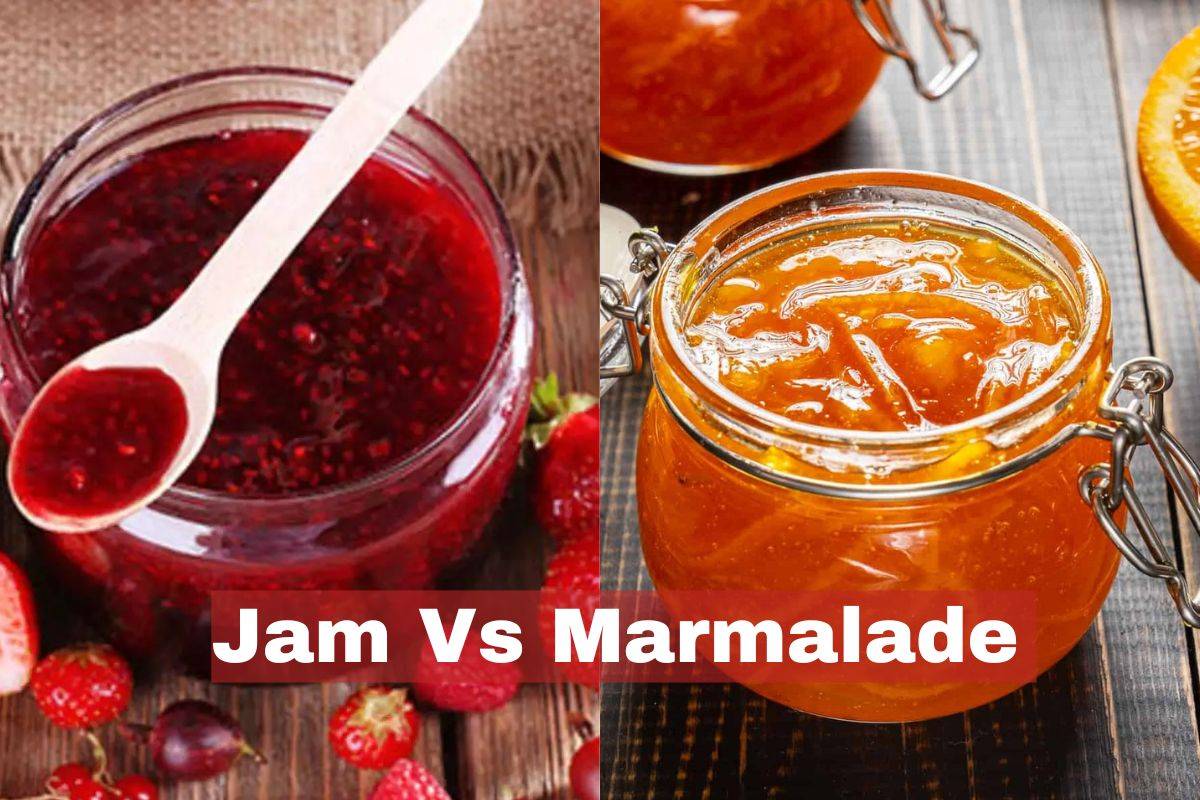
Jam is a fruit or vegetable preserve that is made from whole or cut fruits that are cooked in sugar to produce a thick spread. Marmalade practically uses all of the same ingredients as jams, it has a bitter taste as it also uses the peels of the fruit. Both marmalade and jam are a mainstay in most pantries around the world. They are both sweet, fruity, and delicious addition to a hearty breakfast when spread on a slice of plain or toasted bread.
What is Jam and Marmalade?
Jam- Jam is a product made from whole fruit, water, and sugar. All of these ingredients are boiled for hours until it starts setting because of pectin, a structural acid naturally present in fruit that acts as a gelling agent. Jam-making became popular in 19th-century England and became a thriving industry after the repeal of sugar duties in 1874. Apples, blackberries, cranberries, cherries, apricots, pineapple, peaches, strawberries, and raspberries are fruits that can be turned into jam.
Marmalade- Marmalade is a fruit preserve that is made from boiling fruit juice, fruit peel, sugar, and water. Usually, marmalade is from orange, lemon, sweet oranges, mandarins, limes, grapefruits, bergamots, and even a combination of citrus fruits. Marmalade will always remain a fixture of popular culture because it is the beloved snack of the Paddington bear in the book series and movies.
Nutritional profile of jam and marmalade
Jam- 100 grams of jam has 278 calories, 1% DV (daily value) of sodium, 2% DV of potassium, 4% DV of fibre, 49 grams of sugar, 0.4 grams of protein, 14% DV of vitamin C, 2 % DV of calcium, 2 % DV of iron, and 1 % DV of magnesium.
Marmalade- 100 grams of marmalade has 246 calories, 2 % DV of sodium, 1 % DV of potassium, 2% of dietary fibre, 60 grams of sugar, 0.3 grams of protein, 8 % DV of vitamin C, 3% DV of calcium, and 1% DV of iron.
Health benefits of jam and marmalade
Jam- Not only jams tasty and flavourful but they also have several health benefits. For instance, it is a rich source of vitamin C, a vitamin that promotes the production of collagen which keeps skin, hair, nails, and bones healthy. Fruits jams are a rich source of a myriad of vitamins, minerals, and micronutrients which helps improve the immune system, aid digestion, and reduce the risks of cardiovascular diseases.
Marmalade- In order to prepare marmalade, the entire fruit, including the peel is used. This results in zero wastage. Marmalade is low in calories, low in sodium, contains no fat, and is a rich source of vitamin C. It is also a good source of dietary fibre and calcium. Some studies conducted by nutritionists indicate that 1 gram of marmalade has more antioxidants than a standard glass of orange juice.
Negative effects of Jam and marmalade
Jam- Fruits jams contain a lot of natural and artificial sugar. Excessive consumption of jam can lead to an increased risk of diabetes, obesity, and cardiovascular diseases. It leads to weight gain and can cause a sugar crash when copious amounts are consumed in one sitting. Jams are also very acidic in nature and can irritate the stomach lining.
Marmalade- Like jam, marmalade should be consumed in moderation because it contains a lot of natural and artificial sugar. High concentrations of sugar can increase blood glucose and sugar levels. Commercial marmalades are loaded with artificial preservatives, flavour enhancers, and chemical additives which can be harmful to the body.










